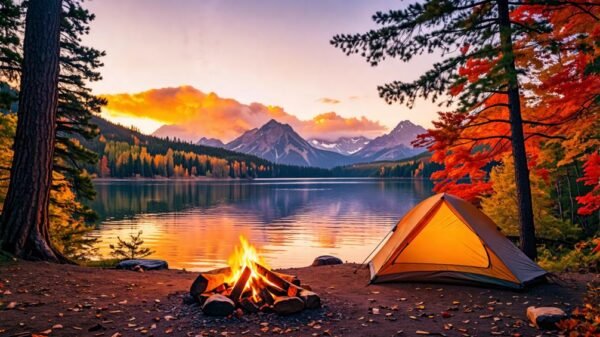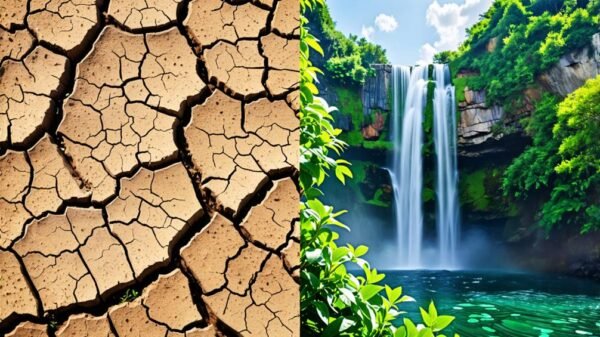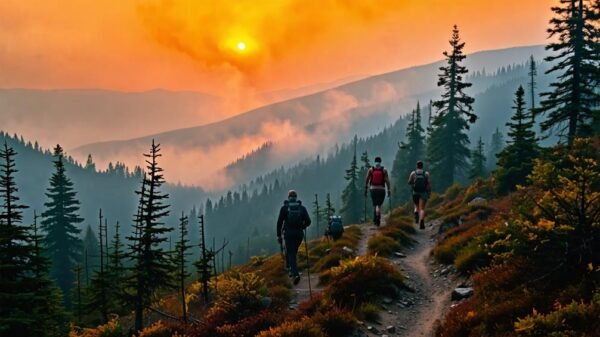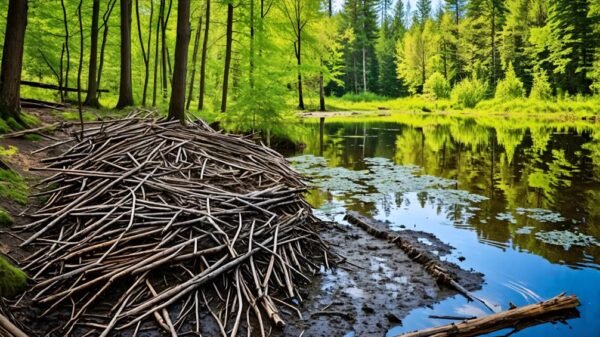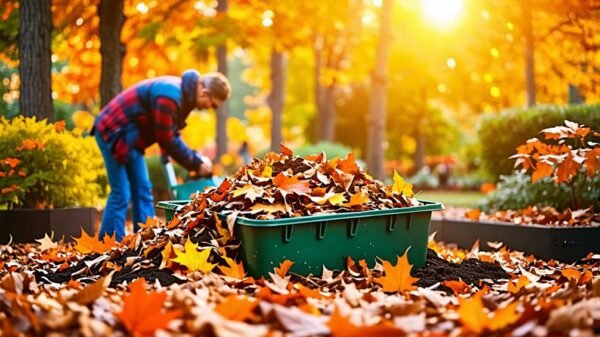To identify signs of a beaver den nearby, look for freshly stripped tree bark and gnaw marks on trees like willow and aspen. Muddy trails along pond edges may indicate beaver activity, as their wide and compact tracks often reveal their movements. Beavers construct dens with mud and branches, featuring underwater entrances for safety. A den's central chamber serves as a sleeping area and nursery, accommodating a family. Moreover, listen for tail slaps on the water, which signal danger. Recognizing these signs assures you of the vibrant wildlife nearby and suggests there's more to learn.
Evidence of Beaver Activity
Beaver activity is evident through specific signs. Freshly stripped tree bark and distinct gnaw marks are common indicators. These marks are often found on trees like willow, aspen, birch, and maple. Such evidence reflects the beaver's instinct to fell trees for nourishment and construction materials. Wildlife tracking enthusiasts may notice muddy trails along pond banks, frequented by beavers.
In addition to tree damage, the presence of a beaver den can be inferred from these signs. Beavers construct their dens with branches and mud, creating secure habitats for their families. Muddy banks and organized twig piles further showcase their industrious behavior.
Signs of Trail and Footprints
Muddy trails along pond edges and distinct animal tracks are crucial indicators of beaver activity in the area. When engaging in nature observation, stay vigilant for these signs, which can reveal much about these industrious mammals. Beaver trails are typically wide and compact, reflecting the regular movement of these creatures as they navigate to and from their food sources.
The tracks of beavers are easily identifiable, featuring five digits and webbed hind limbs. These markings may be found in muddy regions near the water's edge, where beavers work tirelessly, particularly during twilight hours. If you notice a series of tracks leading towards a pond or stream, it strongly suggests that beavers are nearby.
Additionally, the presence of trails may indicate the beavers' foraging behaviors as they seek out favorite plants such as willow and aspen. By learning to identify these signs, you can enhance your understanding of beaver behavior and their ecological significance. Observing these elements can strengthen your bond with nature, enriching your outdoor experiences and cultivating a deeper appreciation for wildlife.
Characteristics of Beaver Dens
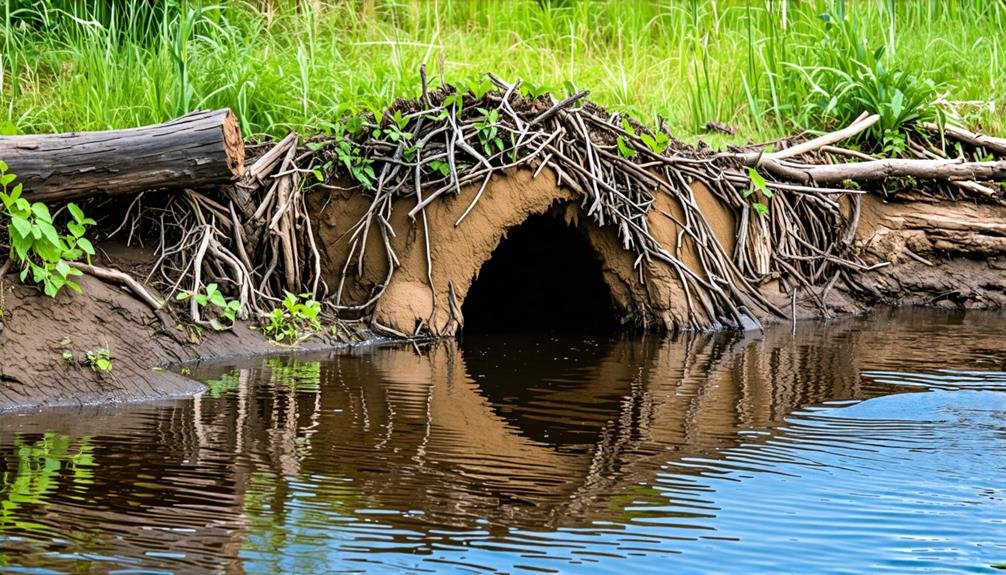
Beaver dens are constructed with care. They feature an underwater entrance, which protects against predators and provides access to pond resources. Made from mud, sticks, and natural materials, these structures are sturdy and resilient.
Inside the den, a central chamber serves as a sleeping area and nursery for young beavers. The size of a den varies but typically accommodates a family with multiple chambers connected by tunnels. Beavers regularly reinforce their dens with gnawed wood and mud to patch weak spots, ensuring a stable environment for their young.
Outside the den, beavers create a safe zone by clearing vegetation. This area serves as a food source and allows beavers to monitor for threats. Observing these dens highlights the adaptability and engineering skills of beavers, which play a crucial role in their survival and the health of ecosystems.
Alert Signals From Beavers
Beavers communicate alert signals to warn each other of potential dangers. One prominent signal is the loud slap of their tails on the water's surface. This sound acts as a warning, notifying fellow beavers of nearby predators. The noise travels across the water, ensuring that all nearby beavers are informed of the threat.
In addition to tail slaps, beavers make vocal sounds like soft grunts or whistles during their daily activities. These vocalizations help maintain group unity, especially while they build dams or gather food. If a beaver detects an immediate danger, it may freeze and use its large tail to create a splash, signaling others to seek safety.
Beavers also demonstrate caution by frequently surveying their surroundings. They may pause their activities to examine the area, showcasing their vigilance against potential threats. Understanding these alert signals provides insights into beaver behavior and their efforts to safeguard their community. Recognizing these signals enriches our appreciation for these remarkable animals and their lives in their natural habitats.
Environmental Changes by Beavers
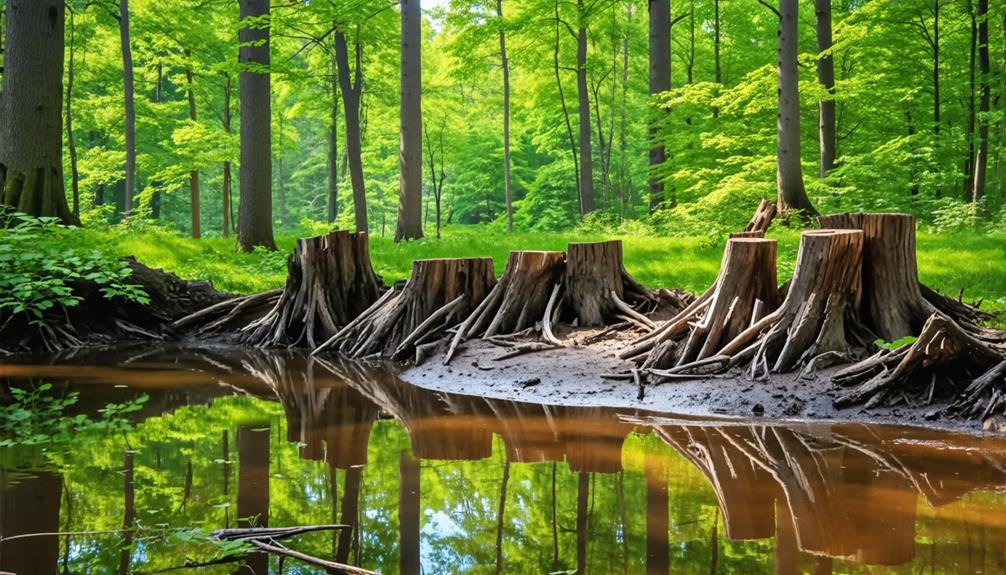
Beavers transform their environments through dam construction. Their dams create wetlands, which support diverse ecosystems. These wetlands provide essential habitats for various wildlife, including fish, birds, and amphibians. By blocking streams, beavers raise water levels, sometimes resulting in flooding in nearby areas. This flooding promotes the growth of aquatic plants and trees.
Additionally, these modifications enhance water quality by trapping sediments and filtering pollutants. Beavers contribute significantly to biodiversity hotspots, as their ponds attract numerous species that depend on these rich environments for sustenance and shelter.
However, beaver activities can conflict with human interests, such as agriculture and infrastructure development. By acknowledging the positive aspects of beaver-engineered landscapes, we can better appreciate their role in sustaining healthy ecosystems. Effective management strategies can harmonize wildlife needs and human activities, enabling coexistence. In summary, beavers not only reshape their habitats but also play a vital role in ecological health, highlighting the importance of these remarkable creatures in our natural world.



